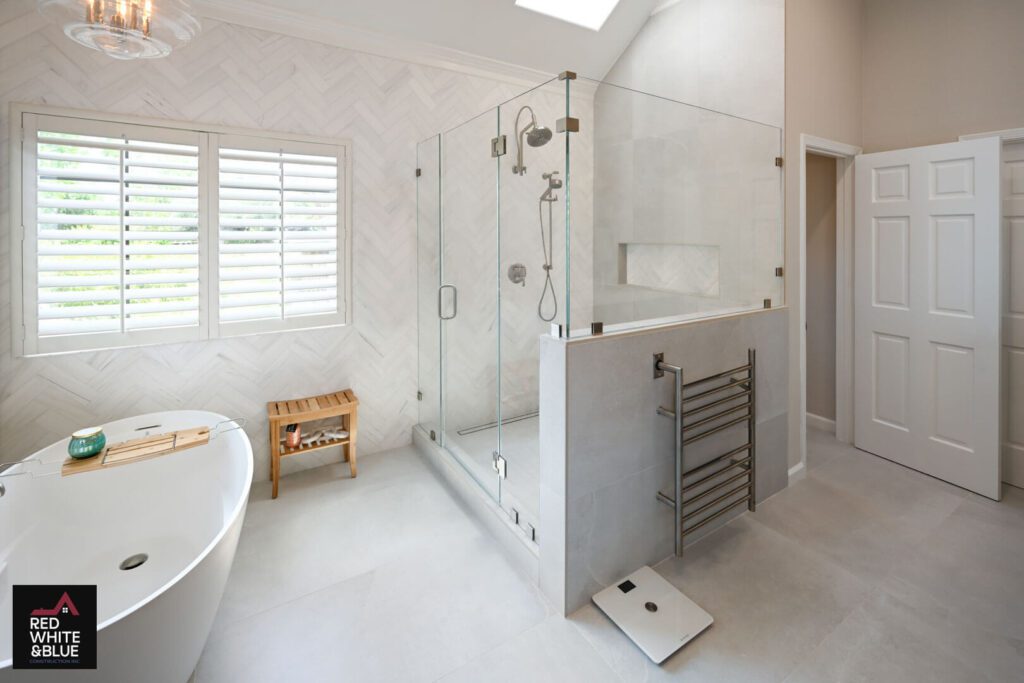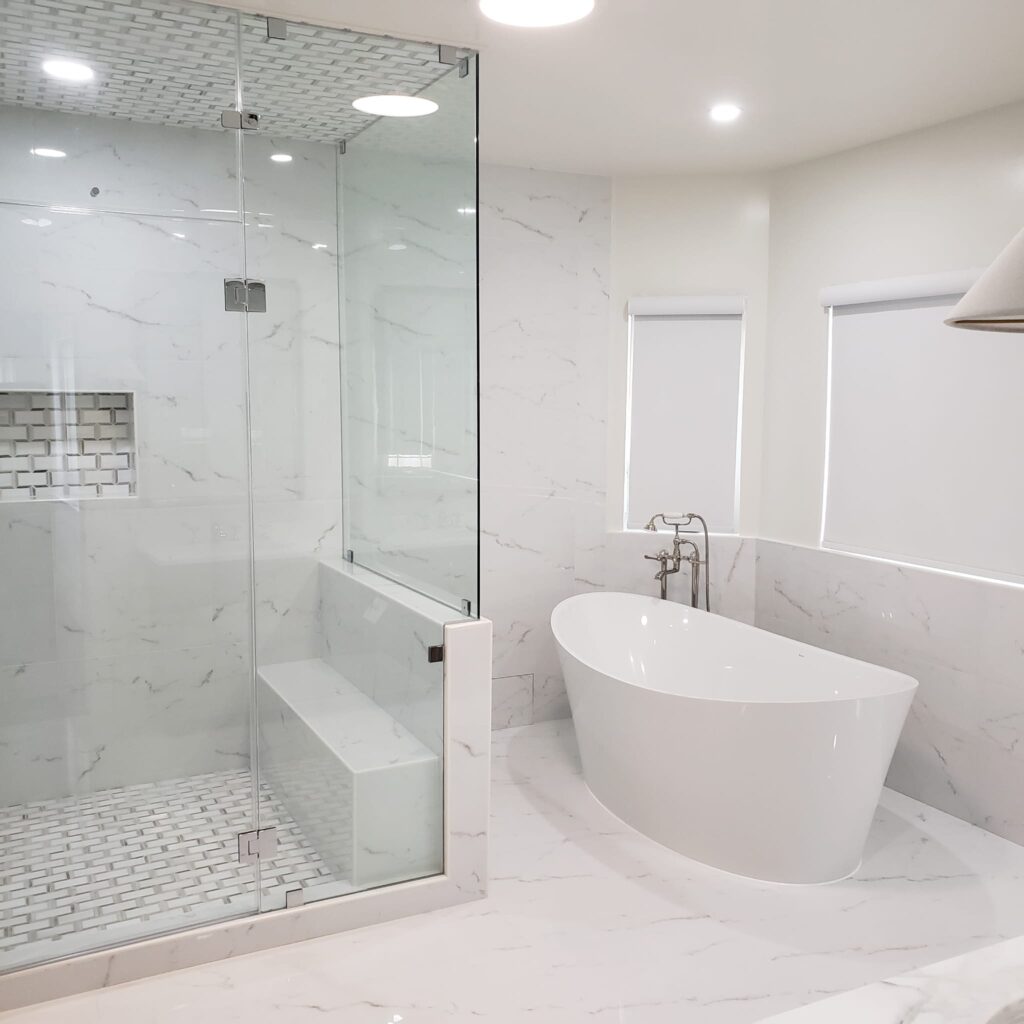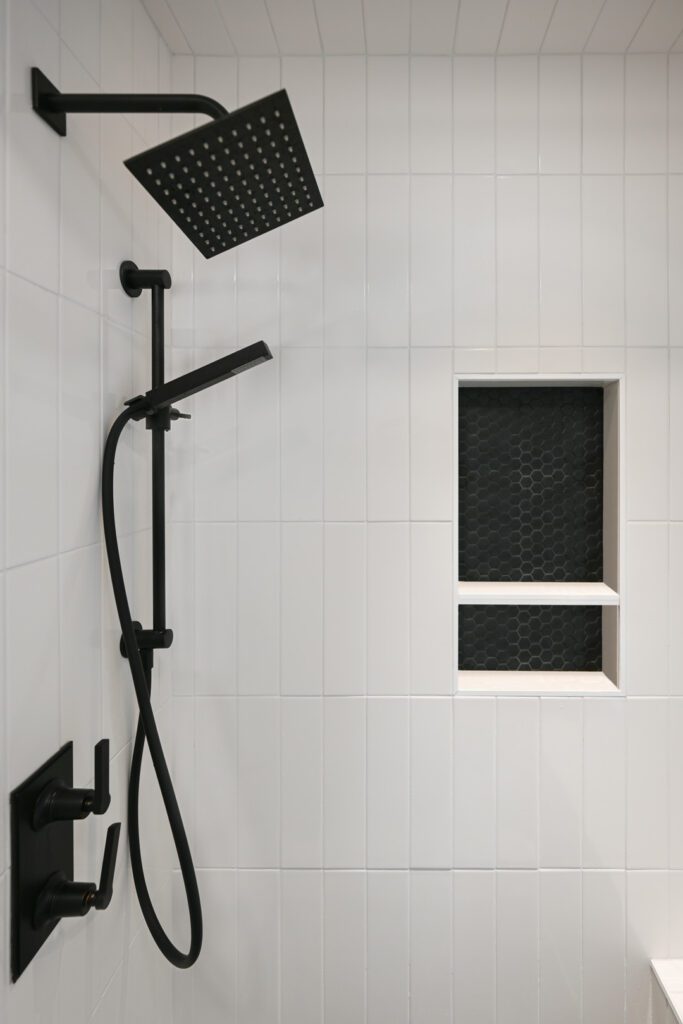When it comes to shower and tub installation, knowing what you need beforehand can make or break your project. From selecting the right fixtures to understanding plumbing requirements, being prepared is key. Before you dive in, consider factors like space constraints, budget considerations, and design preferences. It’s crucial to balance functionality with aesthetics for a successful outcome. Stay informed about the latest trends and technologies to make informed decisions that align with your vision. Don’t let the process overwhelm you; instead, empower yourself with knowledge to navigate the world of shower and tub installations like a pro.
Planning Your Bathroom Layout
Space Assessment
Assess the overall space to determine the best location for the tub or shower. Consider factors like existing plumbing lines and structural constraints. Ensure there is enough room for comfortable movement.
When planning, consider accessibility and flow within the bathroom. Ensure that the layout allows for easy access to both the shower area and the bathtub. A well-thought-out layout can enhance the functionality of the space.
Storage Solutions
Incorporate storage solutions to maximize space efficiency. Utilize niches, shelves, or built-in cabinets to keep toiletries and towels organized. Maximizing storage can help declutter the bathroom and create a more streamlined look.
To optimize space, consider installing a corner shower or a shower enclosure with sliding doors. These options are ideal for smaller bathrooms as they utilize corner spaces effectively. shower walls can be customized to fit your design preferences.
Pros of Corner Showers:
- Space-saving design
- Versatile installation options
- Modern aesthetic appeal
Cons of Corner Showers:
- Limited elbow room
- May require special cleaning considerations
When deciding on a new bathtub installation, explore various options such as a piece bathtub shower or a shower kit. These versatile choices can cater to different preferences and space requirements.
Consider integrating shower wall panels into your design. These panels are easy to clean, durable, and come in a variety of styles and finishes. They can elevate the look of your bathroom while providing practical benefits.
Flow Optimization
Optimize the flow of your bathroom layout by ensuring that the tub or shower is placed strategically. This not only enhances the visual appeal but also improves functionality. A well-planned layout contributes to a seamless bathing experience.
When considering tub renovations, think about the configuration that best suits your needs. Whether it’s a freestanding tub or a built-in option, choose one that complements your overall design theme. Remember to factor in plumbing requirements for a smooth installation process.
Budgeting for Installation Costs
Estimate Costs
To budget effectively for your shower and tub installation, you need to estimate the costs involved. This includes materials, labor charges, and any additional features you plan to incorporate. Research the average prices of these elements to get a realistic idea of how much you need to allocate.
When estimating costs, consider the quality of materials you want to use. Higher-quality materials will naturally come at a higher price point, but they may offer better durability and aesthetics in the long run. On the other hand, opting for more budget-friendly options can help you save money initially.
Contingency Fund
Setting aside a contingency fund is crucial when budgeting for shower and tub installation. Unexpected expenses can arise during the project, such as hidden plumbing issues or structural modifications. By allocating a portion of your budget to a contingency fund, you can handle these unforeseen costs without derailing your entire project.
Having a contingency fund also provides peace of mind throughout the installation process. Knowing that you have extra funds available in case of emergencies can alleviate stress and allow you to focus on the project at hand. It’s recommended to set aside around 10-20% of your total budget for contingencies.
Research Pricing Options
Before starting your shower and tub installation, take the time to research different pricing options for fixtures and installation services. Compare quotes from multiple vendors and contractors to ensure you are getting the best deal possible.
Create a list of potential suppliers and service providers, along with their respective prices and offerings. This comparison will help you make an informed decision based on both cost and quality. Consider factors such as warranty periods, customer reviews, and after-sales support when evaluating pricing options.
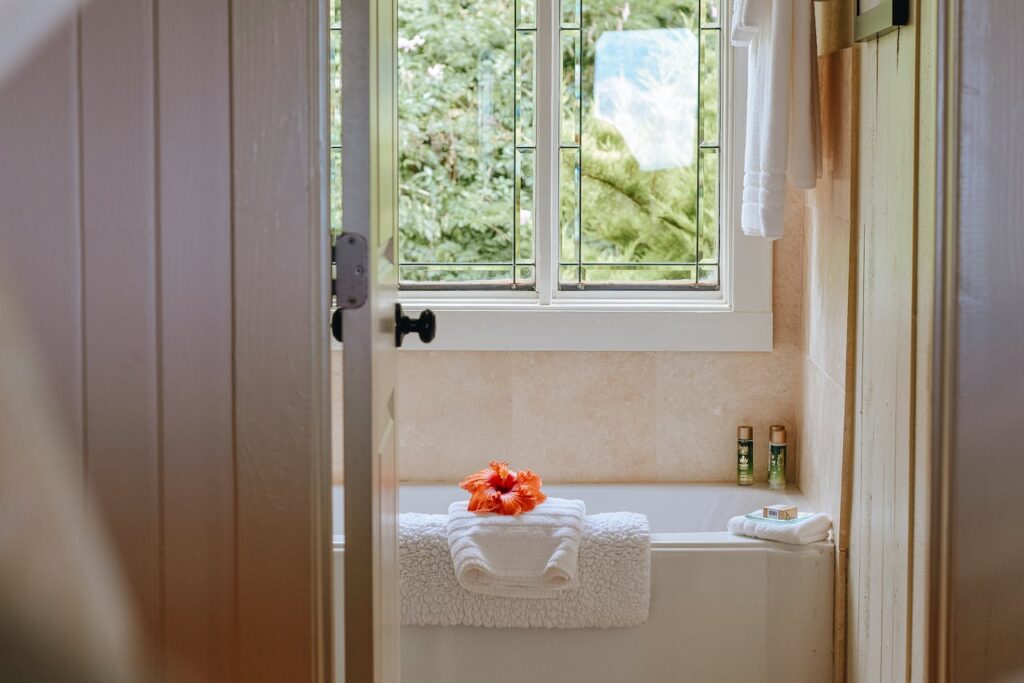
Required Permits for Installation
Check Codes
Before starting your shower and tub installation project, it is crucial to check local building codes. These codes outline the specific requirements and regulations that need to be followed when installing plumbing fixtures in your home. Failure to comply with these codes can result in fines or even having to redo the installation.
It is essential to research the required permits for your area. Different regions have varying regulations regarding plumbing installations, so it is vital to understand what permits are necessary before beginning any work. By obtaining the required permits, you ensure that your installation is up to code and meets all safety standards.
Submit Applications
To avoid any delays or issues during your installation project, it is advisable to submit permit applications in advance. The processing time for permits can vary depending on your location, so it is best to apply as early as possible. By submitting applications ahead of time, you can prevent any hold-ups that may occur if permits are not approved promptly.
When applying for permits, make sure to provide all the necessary documentation and information required by your local building department. This may include detailed plans of the installation, product specifications, and contractor information. By being thorough in your application process, you increase the chances of a smooth and successful installation project.
Consult Professionals
If you are unsure about the permit requirements or the application process, it is recommended to consult with professionals. Experienced plumbers or contractors familiar with local building codes can provide valuable guidance and assistance in navigating the permit process. They can help ensure that your installation project complies with all regulations and standards set forth by your municipality.
Demolition of Existing Fixtures
Remove Carefully
Remove the old tub and shower fixtures cautiously to prevent any damage to the plumbing system. Be gentle to avoid causing leaks or other issues that may arise during the removal process.
Dispose Responsibly
After dismantling the existing fixtures, it’s crucial to dispose of the debris responsibly. Follow your local waste management guidelines to ensure proper disposal of materials such as tiles, pipes, and old fixtures.
Prepare for New Installations
Before installing the new shower and tub, prepare the site by cleaning and clearing the area thoroughly. This step is essential to create a clean and organized space for the upcoming installation process.
Verify Plumbing and Measurements
Inspect Plumbing
Inspect existing plumbing thoroughly to ensure it can support the new fixtures. Look for any signs of wear or damage that may affect the installation process. Ensure that the pipes are in good condition and can handle the increased water flow from the new shower and tub.
Check for any leaks, corrosion, or blockages in the existing plumbing system. Addressing these issues before installing new fixtures can prevent future problems and ensure a smooth installation process. If necessary, consult with a professional plumber to assess the condition of the plumbing and recommend any repairs or replacements.
Confirm Measurements
Double-check all measurements before proceeding with the installation. Accurate measurements are crucial to ensure that the new shower and tub will fit properly in the designated space. Measure the dimensions of the bathroom area where the fixtures will be installed, taking into account any obstacles or constraints that may impact the installation.
Consider factors such as door swings, clearance space, and accessibility when measuring for the new fixtures. Use a tape measure to accurately determine the length, width, and height requirements for the shower and tub. Ensuring precise measurements will help avoid costly mistakes and adjustments during the installation process.
Identify Upgrades
Identify any potential plumbing upgrades that may be needed for optimal performance. Upgrading the plumbing system can improve water pressure, efficiency, and overall functionality of the fixtures. Consider installing new pipes, fittings, or valves to enhance the performance of the shower and tub.
Consult with a professional plumber to determine if any upgrades are necessary based on the condition of the existing plumbing system. Upgrades such as installing a pressure-balancing valve or upgrading to a larger pipe size can enhance the overall performance and longevity of the new fixtures. Investing in upgrades now can prevent issues in the future and ensure a seamless installation process.
Shut Off Water Supply
Locate Valve
When beginning a shower and tub installation project, locate the main water shut-off valve to stop water flow. This step is crucial to prevent any water leakage during the installation process.
Turn off all faucets in your home before proceeding with the installation. By doing so, you ensure that no water is running through the pipes, making it safer to work on the plumbing system.
Label Valves
Consider labeling the shut-off valves for easy identification in the future. This simple step can save time and effort during any maintenance or emergency situations that may arise.
Remember, shutting off the water supply is essential before working on any plumbing-related tasks to avoid potential accidents and water damage.
Evaluate Waste and Overflow Options
Research Options
Research various waste and overflow systems to find the best fit for your tub or shower. Look into different types, such as traditional, toe-tap, or lift-and-turn drains. Compare their functionalities and determine which one suits your needs best.
Consider the ease of installation when choosing a waste and overflow system. Some systems may require professional help, while others are designed for DIY installation. Assess your skills and opt for a system that aligns with your expertise level.
Compatibility with Plumbing
Ensure the waste and overflow system you choose is compatible with your existing plumbing setup. Check the size and configuration of your pipes to avoid any compatibility issues during installation. Consult with a plumber if needed to confirm compatibility.
When evaluating waste and overflow options, prioritize durability. Select a system made from high-quality materials like stainless steel or brass to ensure longevity. Verify that the system can withstand regular use without deteriorating quickly.
Effective Drainage
Effective drainage is crucial for maintaining a clean and functional tub or shower. Choose a waste and overflow system that promotes efficient water drainage to prevent clogs and backups. Look for features like large drain openings and smooth internal surfaces for optimal performance.
Pros:
- Researching various options allows you to find the most suitable system.
- Choosing a compatible system ensures a smooth installation process.
- Prioritizing durability results in long-lasting functionality.
Cons:
- Researching multiple options can be time-consuming.
- Ensuring compatibility with existing plumbing may require additional effort.
- Opting for durable systems might come at a higher cost initially.
Ensure Subfloor is Level
Inspect Subfloor
Check the subfloor thoroughly for any uneven areas that could impact the installation process. Uneven subfloors can lead to issues with the stability and longevity of the shower or tub.
Use Leveling Compounds
To address any discrepancies in the subfloor, consider using leveling compounds. These compounds are designed to create a smooth and level surface, ensuring a solid foundation for the new fixture.
Confirm Subfloor Support
Before proceeding with the installation, it is crucial to confirm that the subfloor is capable of supporting the weight of the new shower or tub. Inadequate support can result in structural problems down the line.
Follow Manufacturer’s Instructions
Read Guidelines
Read and understand the manufacturer’s guidelines for installation. Following these instructions is crucial to ensure the proper setup of your shower and tub. Ignoring them may lead to issues down the line.
It is essential to comprehend the specific requirements outlined by the manufacturer. These guidelines often include information on necessary tools, materials, and installation steps. By familiarizing yourself with these instructions, you can avoid costly mistakes.
Use Recommended Tools
Utilize the recommended tools and materials suggested by the manufacturer. These items are specifically chosen to facilitate a smooth installation process. Using alternatives may compromise the integrity of the setup.
By adhering to the manufacturer’s recommendations, you can guarantee that your shower and tub are installed correctly. This approach not only ensures a secure setup but also prolongs the lifespan of your fixtures.
Document Modifications
Document any modifications made during installation for future reference. Keeping a record of changes allows for easier troubleshooting and maintenance in the future. It also aids in identifying potential issues that may arise.
Creating detailed documentation enables you to track the evolution of your installation process. Whether it’s adjusting plumbing connections or altering fixture placements, maintaining a log of modifications is invaluable.
Conclusion
Your successful shower and tub installation project hinges on meticulous planning, accurate measurements, and adherence to manufacturer guidelines. Ensuring a level subfloor, evaluating waste options, and verifying plumbing details are crucial steps for a smooth installation process. Remember to obtain the necessary permits, shut off the water supply, and factor in all costs upfront to avoid surprises. By following these steps diligently, you’ll create a functional and aesthetically pleasing bathroom space that meets your needs.
Take charge of your bathroom renovation journey armed with these essential insights. Your attention to detail and careful execution will result in a rewarding outcome. Now, go ahead and transform your bathroom into the oasis you’ve always dreamed of!
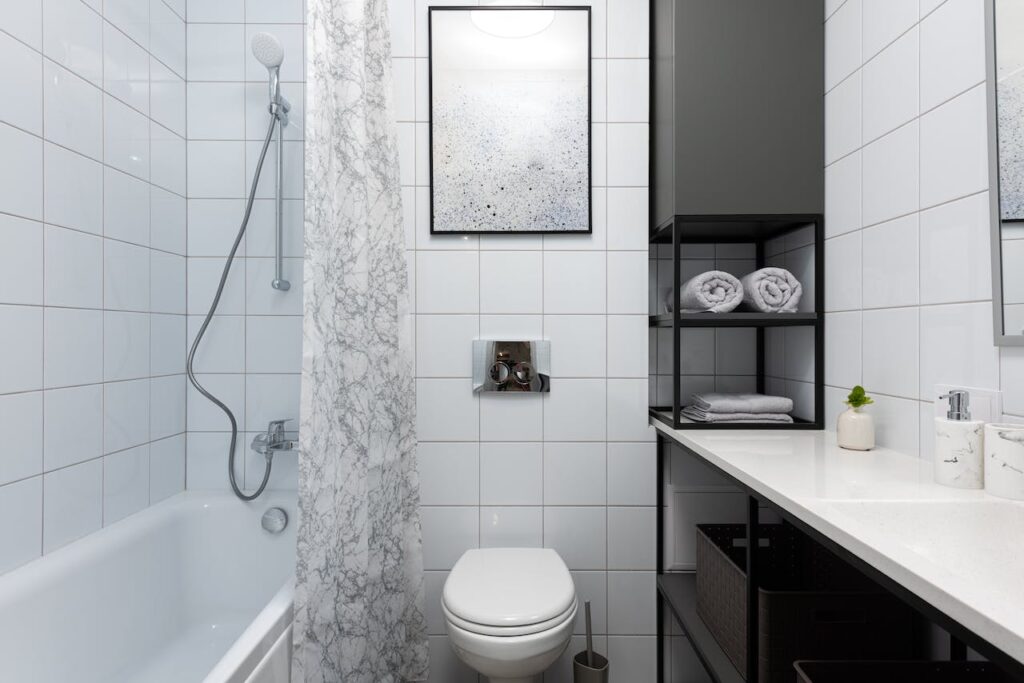
Revitalize Your Bathroom with Expert Shower and Tub Installations by Red White & Blue Construction!
Dreaming of a luxurious bathroom upgrade in Lafayette, CA? Red White & Blue Construction is here to make that dream a reality with our top-notch shower and tub installation services! Our team excels in detailed planning and precise execution, ensuring your bathroom transformation perfectly matches your vision. Specializing in shower and tub installations, we’re dedicated to turning your bathroom into a stylish, functional, and modern sanctuary. Our outstanding reputation throughout the Bay Area reflects our unwavering commitment to quality, precision, and excellence in every project phase.
At Red White & Blue Construction, we believe in enhancing more than just your bathroom fixtures; we aim to elevate your entire home renovation experience. With meticulous planning, transparent pricing, and exceptional customer service, choosing us for your shower and tub installation means embarking on a seamless and enjoyable renovation journey. Let Red White & Blue Construction handle all your bathroom remodeling needs and take the first step toward a more elegant and functional bathroom. Contact us today to get started!
Disclaimer
The materials available on this website are for informational and entertainment purposes only and not to provide advice. You should obtain advice concerning any particular issue or problem from a professional. You should not act or refrain from acting based on any content included in this site without seeking legal or other professional advice. The information presented on this website may not reflect the most current building developments. No action should be taken in reliance on the information on this website. We disclaim all liability concerning actions taken or not taken based on any or all of the contents of this site to the fullest extent permitted by law.

